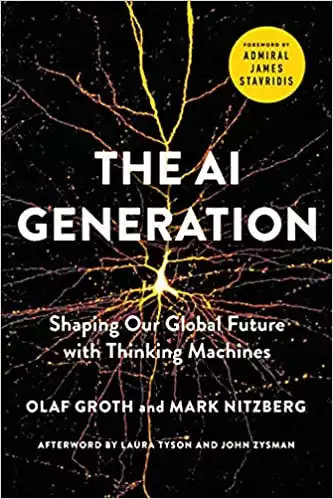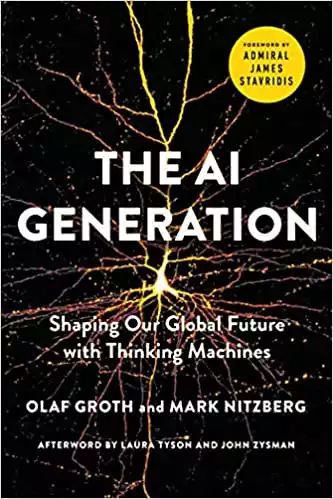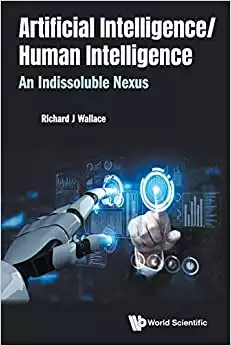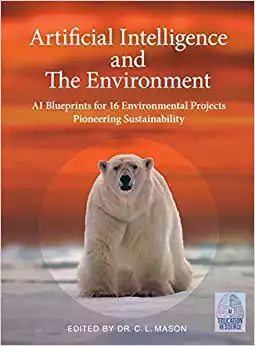Introduction: Artificial Intelligence and Climate Change
Artificial Intelligence and Climate Change: Hardly any day goes by without both climate change and artificial intelligence (AI) making headlines. With evidence of climate change mounting up worldwide and AI becoming ever more powerful in different sectors, it is worth considering the relationship between those two fields.
Animals interact with AI robots.
Leading scientists consider climate change to be the biggest challenge facing our planet right now. Their fears are backed up by numbers. Columbia University reports more than 770 weather and disaster events for the year of 2016, three times as many as the earth experienced in 1980. The scientists also cite the growing numbers of extinction of various species as an example of climate change.
Arguably, the most commonly known sign of climate change is global warming. By 2100, average temperatures are likely to be 3°C higher than they are now. This is only one of the reasons why climate activists continue to urge governments to act faster and more decisively to stem the tide of climate change.
Agricultural Robots.
The World Economic Forum (WEF) identified six areas in which our planet is facing critical challenges:
- Global warming
- Biodiversity
- Ocean chemistry
- Water security
- Air quality
- Disaster and weather resilience
Artificial intelligence technology (AI) is offering potential solutions to some of these challenges. In short, AI refers to computer systems that have learned to sense their environment. They can think, learn more, and act by combining what they have sensed with predetermined objectives. According to the authors of the WEF report, AI is quickly becoming “the “electricity” of the Fourth Industrial Revolution.”
Source: YouTube
Because AI-derived climate zones are based on real-world data rather than predefined factors, they have the potential to allow more accurate predictions. One such example is the climate model developed by the National Center for Atmospheric Research (NCAR). The model aims to project both precipitation and temperatures up to 2050, following a variety of scenarios.
AI technology allows researchers to create and compare different scenarios within minutes. The NCAR research projects changes based on the assumption that greenhouse gases are aggressively reduced worldwide. The model then compares those predictions to what may happen if the world continues to operate as usual.
Compared to traditional climate zones, AI-based predictions are rooted in actual data. By putting different outcomes side-by-side, researchers can make a more compelling argument for the need to change our daily habits.
What are smart cities?
The scientists at the Mercator Research Institute on Global Commons and Climate Change in Germany have harnessed AI’s data processing power for attribution studies. Analyzing vast quantities of data has allowed the researchers to prove that the impact of climate change can already be felt almost universally around the world.
Their research highlighted changes in the climate of a specific location and then identified the driver behind the changes. The results have been published as a map, and the authors believe it can provide “orientation for the global fight against global warming.”
At this stage, however, the map is far from complete. Data is missing for some of the countries that have been affected most directly by climate change. Several low-income countries simply do not have the amount of depth of research compared to their more developed counterparts.
AI for Planting Native Trees
The planting of native trees is one promising application for artificial intelligence technology. At a time when deforestation is considered one of the biggest contributors to greenhouse gas emissions, this could be a game changer.
Source: YouTube
The model may also help with outdoor event planning, air traffic and ground traffic control as well as water management. Once again, AI outperforms traditional technology because of its ability to process large quantities of data fast.
Deep Mind uses high-resolution radar data to measure the humidity in the air and the speed at which water vapor is moving. A machine learning algorithm then uses this data to predict rainfall.
Despite having been the subject of countless jokes, traditional weather forecasts are rather accurate in the medium to long term. However, predicting precipitation in the very near future has proven challenging. This is where AI can close a gap.
AI to Detect Ground Water
The World Economic Forum’s report on harnessing the potential of AI for the earth identified water security as a major challenge. The paper stated that as early as 2030, the world may fall 40% short of the amount of freshwater required to support the global economy.
This is where AI technology can be invaluable both in predicting groundwater availability and in assessing water quality.
Source: YouTube
In India, AI-based models are being used in the Ganges river delta to assess whether groundwater has been exposed to arsenic pollution. In this case, researchers from the Indian Institute of Technology in Kharagpur combined traditional, statistical research methods with artificial intelligence techniques.
Another part of their research investigated and evaluated the health of people who had already been exposed to arsenic. By analyzing vast quantities of data, the researchers identified the worst affected regions. They also learned that groundwater-fed irrigation was the leading factor in causing arsenic hazards.
Their findings have been transposed onto a map to visualize where interventions are needed most urgently. The same results are also the baseline for India’s commitment to providing safe drinking water to every family by 2024.
Similar projects are underway in Malaysia, where a group of researchers used intelligent calculating tools to simulate the groundwater level in the Langat Basin area over seven years. The Malaysian scientists measured rainfall, humidity, minimum and maximum temperature as well as evaporation. These parameters were input into different models, whose accuracy over time the scientists compared.
Whilst the Langat Basin research compared the accuracy of two different AI techniques. Another recent study compared four different techniques to identify the one most suited to groundwater quality forecasting. Despite different accuracy delivered by different approaches, one thing is clear: AI is already likely to make better decisions under critical conditions than humans can.
Conclusion
Artificial intelligence technology has outstanding potential to help fight the consequences of climate change. Whilst having a large carbon footprint itself, AI applications and techniques also have the power to improve climate change outcomes.
Groundwater detection and monitoring, reforestation, rainfall prediction, and mapping of climate zones are four prime examples of AI’s potential. Technology may not replace humans when it comes to climate change research. But its capacity to analyze vast quantities of data and facilitate scenario planning faster than humans could make this technology invaluable.














